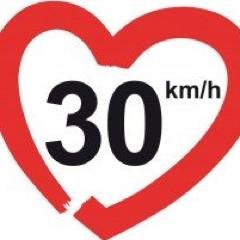
Imagine gliding through your neighborhood at 50 kilometers per hour, windows down, enjoying the breeze. Now picture a cyclist attempting to traverse that same road, heart racing as cars zoom by just a hair’s breadth away. A fresh study from RMIT University indicates that we can remedy this discrepancy without transforming your commute into a slow crawl.
Researchers analyzed every roadway in Greater Melbourne and stumbled upon a surprising discovery: reducing residential speed limits from 50kph to 30kph decreases cyclist stress by 30% while only adding roughly one minute to brief local car trips. These findings come just as Victoria introduces new legislation permitting councils to suggest 30kph zones around schools and on local streets.
The Stress Test
The team evaluated roads utilizing a Level of Traffic Stress framework, a system that categorizes streets from LTS-1, where even your grandmother would feel at ease cycling, to LTS-4, the type of multi-lane arterial that leads experienced riders to clutch their handlebars a bit tighter. They considered speed limits, traffic density, cycling facilities, and road hierarchy, merging OpenStreetMap data with government travel surveys and agent-based transport modeling.
In present conditions, cyclists spend approximately 55% of their journeys on low-stress roads (LTS-1 and LTS-2). Lower residential speeds to 30kph, and that percentage climbs to 70% for all trips and 74% for journeys under two kilometers. More than two-thirds of an average bike journey transitions to more tranquil streets.
“Diminishing traffic speeds alleviates the stress of cycling, encouraging a greater number of people to opt for bikes as a secure and practical mode of transport,” stated study lead author Dr. Afshin Jafari.
The mode choice model verified what many cyclists are already aware of: high-stress routes deter ridership. The assessment revealed a significant negative correlation between the likelihood of cycling and exposure to LTS-3 and LTS-4 segments, those anxiety-inducing stretches where painted lines feel more like suggestions than actual protection.
The Car Question
Speed limit reductions frequently encounter resistance due to concerns about traffic congestion and prolonged delays. The RMIT team foresaw this and ran simulations on 717,740 car trips to evaluate the actual effect. The conclusion? Average travel time for all car trips remained virtually unchanged. Even for trips where at least half the distance traversed newly slowed residential streets, the increase was about one minute, moving from roughly four minutes to five.
Why so slight? Most car travels utilize residential streets only at the start and finish, spending the majority of travel time on arterials and collectors where speed limits remain unaffected. The 30kph zones act like neighborhood speed bumps, momentary slowdowns that hardly register on the overall clock.
“Most trips typically use residential streets only at the beginning and end, so 30kph instead of 50kph in those brief sections makes minimal difference,” Jafari explained.
The simulations also unveiled an unexpected perk: daily traffic volumes on residential streets slightly decreased under both the 40kph and 30kph scenarios. Motorists instinctively directed themselves toward main roads, leaving neighborhoods quieter and safer, particularly for children walking or playing.
Jafari highlighted that outer suburban areas, frequently lacking even footpaths, stand to benefit the most. Installing physical barriers on every local street would be ideal but requires substantial time and resources. Reducing default speed limits, on the other hand, can be quickly and economically implemented while longer-term infrastructure projects progress.
The study examined 69,176 trips from the Victorian Integrated Survey for Travel and Activity, routing each one through the network under baseline, 40kph, and 30kph scenarios. Researchers employed impedance-based algorithms to consider intersections and detours, acknowledging that cyclists may accept routes up to 15-20% longer to avoid high-stress roads.
International evidence backs the findings. Research from European cities demonstrates that 30kph zones lead to a 23% reduction in road crashes, a 37% decrease in fatalities, and a 38% drop in injuries. Lower speeds also diminish noise pollution by up to 40%, benefiting urban livability.
The study did not explicitly model the resulting increase in cycling, a logical subsequent step. Merging the updated LTS network with the mode choice model within the agent-based simulation would allow researchers to capture both the transition from short car trips to cycling and any subsequent changes in car travel times caused by that shift.
Nonetheless, the message is evident: slowing down on residential streets enhances cycling safety without significantly disrupting car traffic. As cities contend with congestion, pollution, and public health concerns, 30kph zones present a pragmatic interim solution toward establishing genuinely bike-friendly networks.
Journal of Cycling and Micromobility Research: 10.1016/j.jcmr.2025.100085
There’s no paywall here
If our reporting has informed or inspired you, please consider making a donation. Every contribution, no matter the size, empowers us to continue delivering accurate, engaging, and trustworthy science and medical news. Independent journalism requires time, effort.